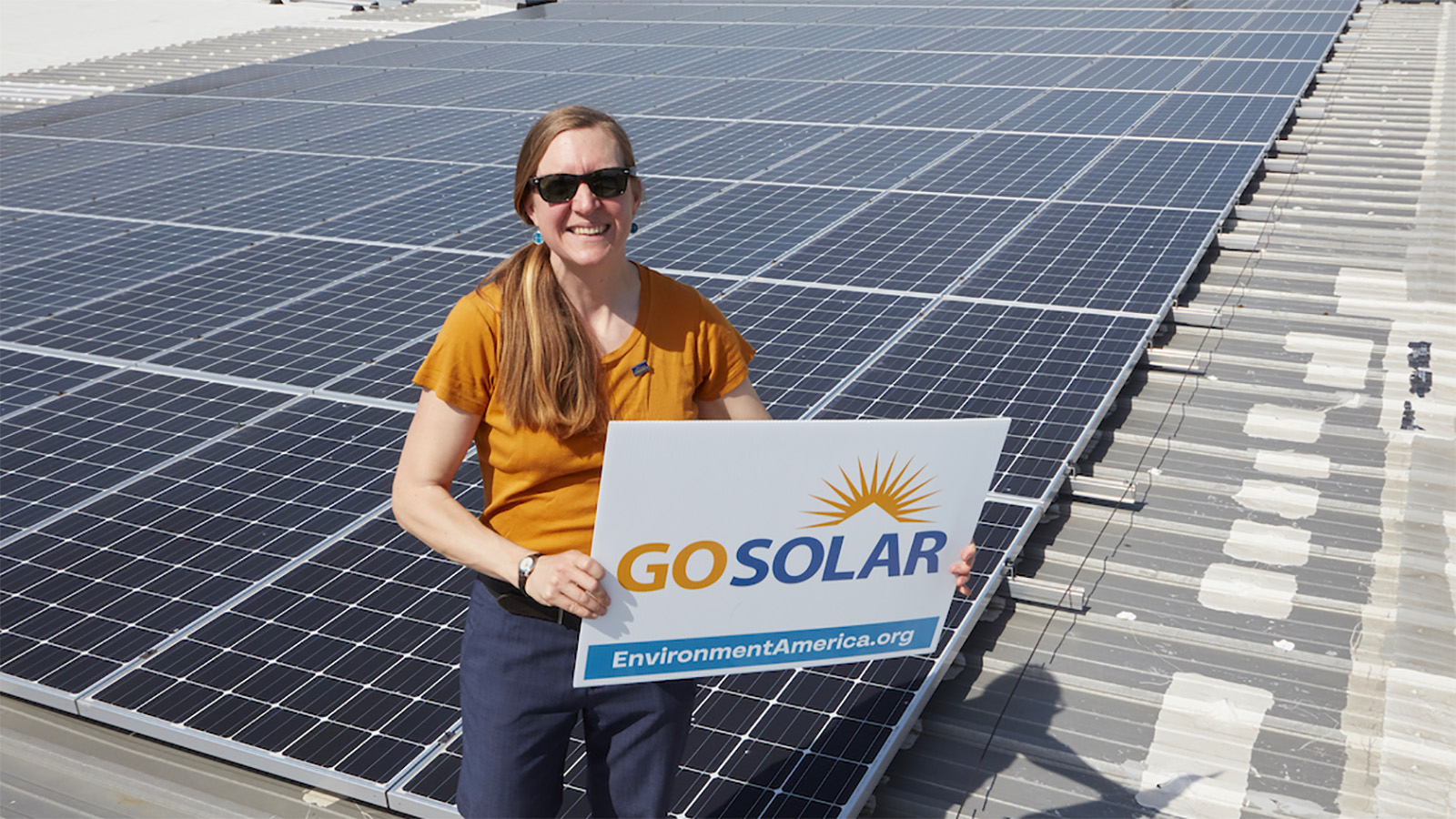
Get resources on how you can go solar — and more
Small-scale solar energy – most of which is installed on rooftops – is growing rapidly in the U.S., producing 10 times as much power in 2022 as a decade earlier.
Sign up
Senior Director, Campaign for 100% Renewable Energy, Environment America Research & Policy Center
Associate Director and Senior Policy Analyst, Frontier Group
Solar energy is abundant, affordable and a big part of America’s transition to renewable energy. Solar power is especially valuable when it produces energy right where we need it: on the rooftops of our homes and businesses.
Rooftop solar is good for the environment and consumers. It reduces our dependence on fossil fuels, eases strain on the grid during periods of high demand, can increase resilience to threats like extreme weather, and limits the amount of land needed for clean energy – all at steadily falling costs.
Rooftop solar power is growing all across the country. The dashboard below allows you to explore rooftop solar trends in your state:
Small-scale solar energy – most of which is installed on rooftops – is growing rapidly in the U.S., producing 10 times as much power in 2022 as a decade earlier. That’s enough electricity to power 5.7 million typical American homes – more than all the homes in the state of Pennsylvania.
Despite this rapid growth, we’ve barely scratched the surface on America’s immense potential to generate clean energy on our rooftops. America could produce the equivalent of 45% of the electricity we currently use from rooftop solar, yet, in 2022, rooftop solar provided only 1.5% of America’s electricity.
Rooftop solar power is growing fastest in places with supportive public policies that make it convenient, fast and affordable to install solar panels. Leading solar energy states usually have the following policies:
The incentives available under the federal Inflation Reduction Act make it even more affordable to install rooftop solar. They include:
To track the progress of solar energy and other clean energy technologies in your state and around the United States, visit our Renewables on the Rise dashboard.
To learn more about the environmental benefits of rooftop solar, see Environment California Research & Policy Center’s report, “The Environmental Case for Rooftop Solar Energy.”
To learn more about how you can join the millions of Americans producing solar power on their rooftops, check out Environment America’s “How to Go Solar” consumer guide.
For more information about rooftop solar power and the policies that help it to thrive, as well as detailed sources and methodology for the data presented above, please click on the full “Rooftop Solar on the Rise” report at the top-left of this page.
Sign up and we will email you information on how you can go solar, support renewable energy and help build a greener future--starting at home!
Sign up
Senior Director, Campaign for 100% Renewable Energy, Environment America Research & Policy Center
Johanna directs strategy and staff for Environment America's energy campaigns at the local, state and national level. In her prior positions, she led the campaign to ban smoking in all Maryland workplaces, helped stop the construction of a new nuclear reactor on the shores of the Chesapeake Bay and helped build the support necessary to pass the EmPOWER Maryland Act, which set a goal of reducing the state’s per capita electricity use by 15 percent. She also currently serves on the board of Community Action Works. Johanna lives in Amherst, Massachusetts, with her family, where she enjoys growing dahlias, biking and the occasional game of goaltimate.
Tony Dutzik is associate director and senior policy analyst with Frontier Group. His research and ideas on climate, energy and transportation policy have helped shape public policy debates across the U.S., and have earned coverage in media outlets from the New York Times to National Public Radio. A former journalist, Tony lives and works in Boston.
